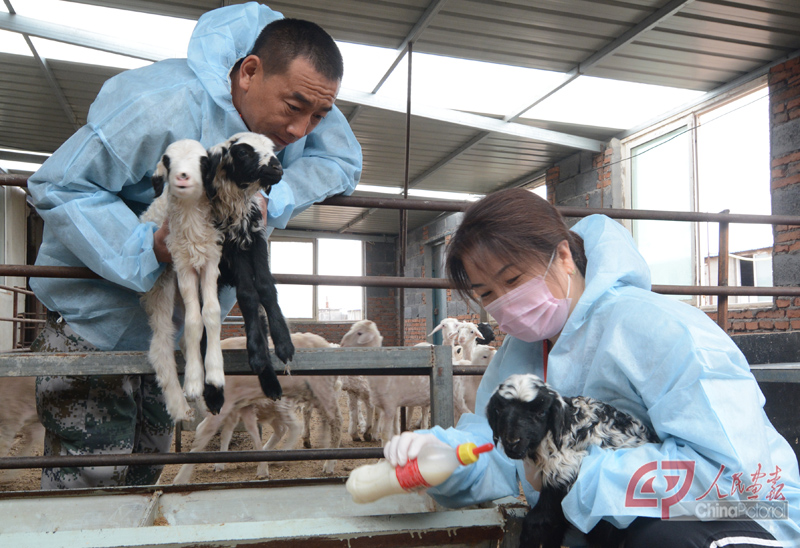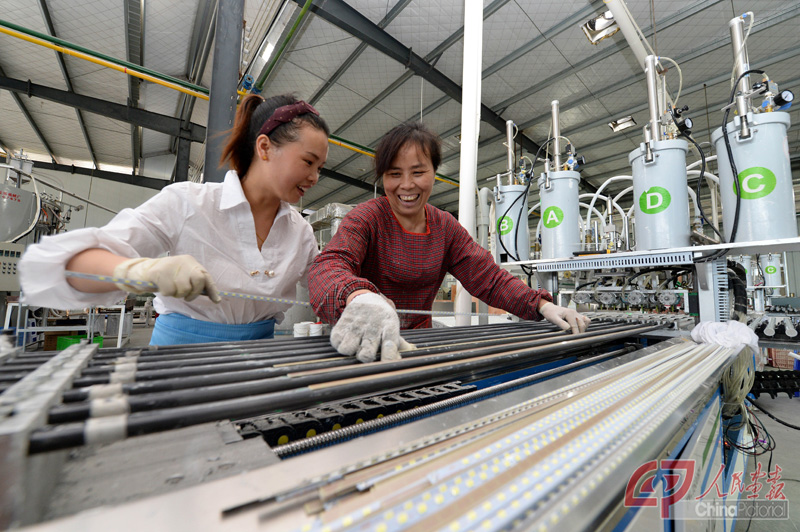A River of Return

Not long ago, the National Bureau of Statistics of China released Report on the Monitoring Survey of Migrant Workers 2016 (hereinafter referred to as Report), showing that in 2016, the total number of migrant workers in the country reached 281.71 million, a year-on-year increase of 1.5 percent. Noticeably, over 80 percent of the incremental amount worked locally, instead of in cities far from their hometowns. More and more migrant workers are finding jobs near their origins. How is this happening?

Growing Gravity
Guo Quan’an left his hometown in Renshou County, Sichuan Province almost 20 years ago at age 17 to join the massive population of migrant workers in Guangdong Province, where he became an expert in interior decoration. Recently, he has become eager to go back home to work.
He is realistic: In recent years, his hometown has seen great progress and created more business opportunities. He is confident he could land a job earning at least 4,000 yuan a month. He would save the cost of traveling back and forth, have more time with his family and be able to take care of his farmland. “It would be more economical,” he suspects.
Guo is only one of many who want to “flow back” to where they are from. According to the Report, in 2016, the population of local migrant workers hit 112 million and is expected to grow higher. “More and more working migrants are choosing to return home to find jobs and start their own businesses,” declares Professor Li Chang’an from the Faculty of Public Administration under the University of International Business and Economics. “ It is an encouraging trend.”
As China continues transforming and upgrading its industrial structure and adjusting the layout of regional industries, the central and western parts of the country have seen increasing capacity to employ migrant workers. Over the last few years, due to rising labor costs and relevant policies, labor forces have gradually shifted from eastern coastal areas to the central and western regions, where new growth points are found in and around the reservoir of labor forces. In 2016, for example, in Chongqing, once a major labor exporter, the number of migrant workers who chose to work locally was nearly 1 million more than the number working elsewhere, creating a heavy counter-current.
Furthermore, local economic development and various supportive policies have drawn more migrant workers back home for employment opportunities and to start businesses. “In recent years, the central government has issued many favorable policies for rural areas, covering taxation and finance, among others,” reiterates Professor Li. “It has also accelerated local infrastructural construction and implemented the practice of relieving people in poverty-stricken areas by employing them instead of just handing over grant money. The government invests in infrastructural projects in which impoverished farmers contribute to construction to get paid, as well as launching projects concerning poverty alleviation, which have all created jobs for local farmers.”
“Local governments have made numerous attempts at poverty relief by adjusting measures to local conditions,” asserts Li Yongzhuang, director of the Research Center for Livelihood Economy under the Central University of Finance and Economics. “The growing population of local migrant workers evidences the strength of the local economy, representing increasing opportunities for entrepreneurial activities and employment, and helping more people out of basic agricultural labor.”
It’s also worth noting that the average age of migrant workers has been growing, along with the entire population’s structural changes. The group is burdened with the pressure of looking after the older and younger generations at the same time: They are exhausted with working far away and reconsidering a return to their roots. Another factor is that in recent years, the wealth gap between inland and coastal areas has shrunk, as the average income of farmers has increased.

New Opportunities
The mass of 112 million people, more than the population of most countries, shifting locality is no small matter. What changes will the trend bring?
“This is a U-turn on the influx towards urban areas,” illustrates Director Li. “Some of the group is flowing back naturally, which is providing a precious strategic opportunity for local economic progress.”
“They can serve as a dual engine,” Li adds. When they left home in the first place, they lived on their physical strength. Now they return with skills and experience in business management-dreams and ideas for start-ups. After upgrading technically, they will undoubtedly accelerate their hometowns’ economic development by working for local enterprises or establishing businesses of their own. Some of them might participate in countryside governance. The economic progress of their hometowns will in turn convince more people to stay.
For quite a while, migrant workers have left much of their lives behind to earn a living elsewhere. As they return to work in their hometowns, problems related to left-behind children and empty-nest elderly people could be resolved automatically.

How to Keep Them?
It is a big challenge for local governments to keep the returning labor, because the increasing numbers will test the capacity of local infrastructure and public services.
“The local governments have a lot on their plates,” notes Director Li Yongzhuang.
First, they can attract labor with business. Efforts should be made to lure major industries via a series of policies and measures to encourage employment as well as start-ups. They can support and accelerate rural e-commerce and logistics.
Second, they can launch targeted campaigns for personnel management and training. Generally speaking, migrant workers have room to grow culturally and intellectually. Local governments should establish special institutions or entrust third-party institutions to intensify training of migrant workers of all ages to become employees in emerging industries and rare and scarce professions, and avoid being washed out of the employment market due to industrial and technological upgrading.
Third, they can establish infrastructure such as movie theaters and libraries to feed the demands of cultural life. The promotion of good habits and healthy lifestyles can help migrant workers continue to enjoy the advantages of big cities, even in their hometowns.
Fourth, they can provide systemic, perfected social insurance. The returning migrant workers have created a new type of local productivity, and any family considerations that could delay the return should be addressed. Along with five kinds of social insurance and a housing fund, local governments should work out more methods of providing aid and enacting preferential policies to tackle issues such as education, healthcare and senior care.